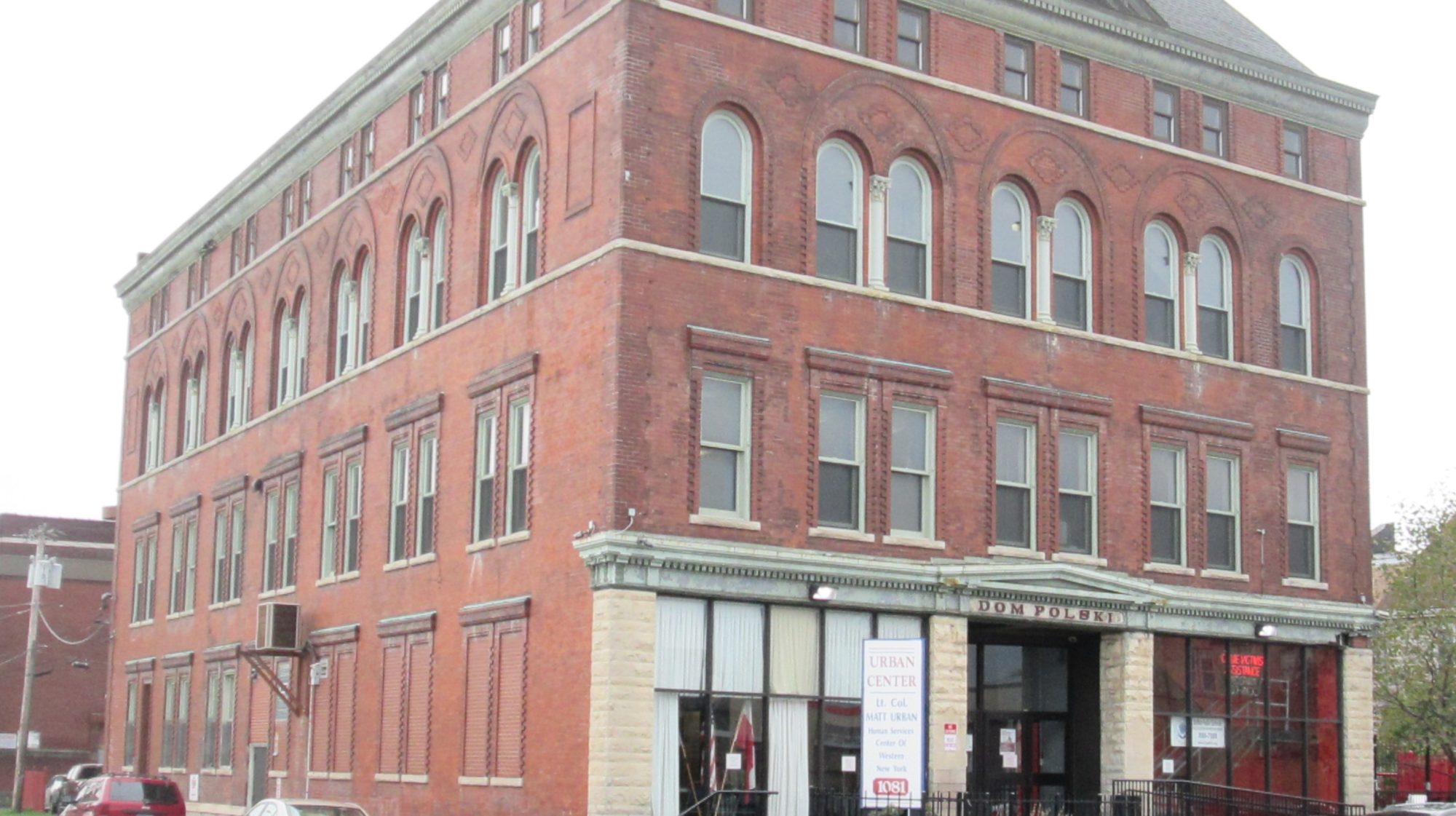HopeGardenrenderingThe Matt Urban Center worked with Laurie Hauer-LaDuca (Architect), Savarino Companies (Construction Manager), and Janet Meiselman of Oxford Consulting, to submit grant applications and build this apartment building for homeless women in East Buffalo. This project, known as Hope Gardens, opened in December 2014 and allows us to continue assisting the homeless population in Buffalo.
The Need
In the United States, the homeless population is on any given night to be 744,313 (HUD). In Buffalo, on any given night there is an estimated 2,100 homeless individuals or families who are homeless. It is estimated that the chronically homeless represents 18% of the homeless and women represent about 48% of the homeless. Based on these numbers and percentages, chronically homeless women account for approximately 180 homeless in Buffalo.
Our Vision for Hope Gardens
Elliott Liebow completed a 10 year research project that was later turned into a book: “Tell-Them Who I am: The Lives of Homeless Women.” His research and book cited that chronically homeless women have unique needs that are different from chronically homeless men. While men may do well in a dormitory setting, women do very poorly in this setting, and do not respond well to institutional controls. In a study by Novac, Brown and Gallant, they reported that there is a direct relationship between homeless women and the physical and sexual abuse that homeless women have experienced in their lives. The study also revealed that women, particularly chronically homeless women, do poorly living in an environment with tight institutional controls. Instead, a home-like setting where they have their own personal space is vital to the success of a program. It was through this research and study of best practice models around program design that our concept for Hope Gardens was born.
While Liebow’s study focused on shelters, we may glean philosophical aspects when designing the program for this permanent supportive housing program. The building is a two-story structure built around a central therapeutic courtyard. Built on many City of Buffalo land parcels (58, 60, 62, 66, 68, 70, 76 Oberlin; 53, 57, 59, 61, 63, 65, 69, 71 Ruhland), the building is a central feature of the landscape.
First Floor
The first floor houses offices, a kitchen/dining room large enough for 20 individuals, a laundry room, art studio, community living room, computer lab/library and a conference room and a small private office (for counseling clients) and five studio apartments.
Second Floor
The second floor has fifteen studio apartments. Like the apartments on the first floor, each apartment will have a small bedroom area, living area, small in room kitchenette and bathroom.
Construction
Ribbon Cutting for Hope Gardens was held on December 15, 2014.
Hope Gardens Today
Hope Gardens Housing First provides 20 chronically homeless unaccompanied women with permanent supportive housing in a single site with efficiency size apartments within our community. Staff utilize a low demand/harm reduction method of case management. Holding true to the housing first model, the vast majority of our clients have lived on the streets or in abandoned buildings just prior to entry into Hope Gardens. Our goal, especially the first year, is to work with residents to rebuild healthy social networks and foster friendships among the residents. As many of our residents lived in isolation as a way of protecting themselves while living on the streets and while isolation may have kept them safe, our hope is to restore their sense of belonging in an accepting environment where healing may occur at their own pace.


